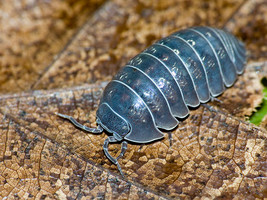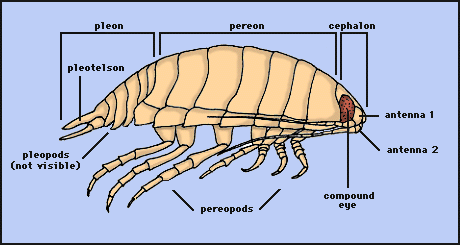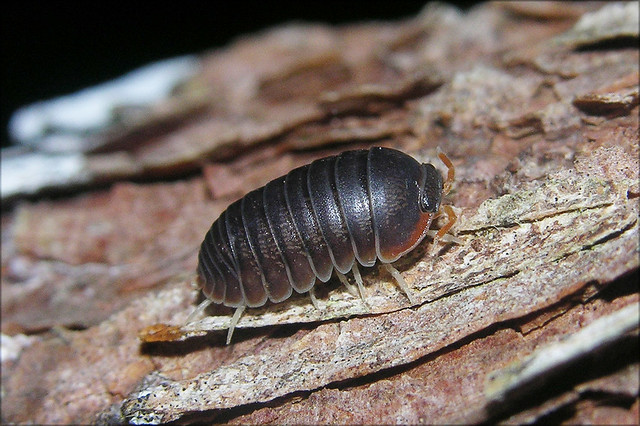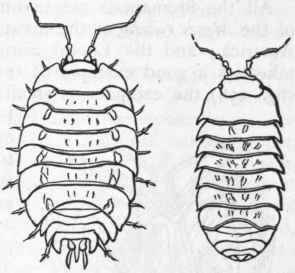Isopoda
Woodlouse ( Porcellio scaber )
The isopods ( Isopoda ) are an order belonging to the class of higher crustaceans ( Malacostraca ). Isopods are 3 mm to 45 cm tall. Most isopods are herbivores and are thus biologically to the Erstzersetzern.
The body of the isopods is in contrast to the closely related amphipods from the back to the belly flattened. They have seven pairs of legs and a constant number of limbs. The gills are sitting on their back legs. However, different species show different levels of customization to a life on land, so there is next to the gills also species with other respiratory organs such as trachea or lungs.
The original habitat of woodlice is the sea. But they are also found in fresh water. A small group - the Woodlouse - has left the water, but consistently maintained their gills. The boys develop directly from eggs in a brood pouch ( marsupium ) under the body of the female. A female can have up to 100 pups a year. Since the isopods have to keep their delicate gills attachments constantly moist, they prefer moist habitats, but can also be found in the dry. Thus one finds the Sow ( Oniscus Asellus ) in fall foliage, under tree stumps and stones. With their mouthparts ( mandibles ) they can nibble fall foliage and deadwood.
System
The order includes about 10,000 known species in an estimated 120 families who are split into ten submissions.
- Anthuridea (worldwide marin, but also in brackish and fresh water)
- Asellota (mainly in deep waters of the Pacific and the Atlantic Ocean, but also in fresh water, such as water isopod )
- Calabozoidea ( in freshwater and groundwater in South America )
- Epicaridea ( ectoparasites on marine crustaceans worldwide)
- Flabellifera (worldwide marin and occurring in freshwater, polyphyletic group with some parasitic representatives, to the scavengers within this group include the giant isopods )
- Gnathiidea ( the larvae are fish parasites, the adult animals living freely in the marine benthos of all depth zones )
- Microcerberidea (less than 2 mm, in the interstitial fresh water and the oceans, to the East Pacific coasts of South America, Africa, India and the Mediterranean)
- Terrestrial isopods ( Oniscidea ) (worldwide, mainly in humid, but also occasionally in dry locations on land )
- Phreatoicidea ( in surface waters, swamps, springs and groundwater in the southern hemisphere at high altitudes )
- Valvifera (marine, mainly circumarktisch and antarctic, in the Baltic Sea louse European seas is common)
Types (selection)
- Woodlouse ( Porcellio scaber )
- Clip isopod ( Ligia oceanica )
- Sow ( Oniscus Asellus )
- Giant isopods ( genus Bathynomus )
- Water louse ( Asellus aquaticus )
- Cymothoa exigua
- Holzbohrassel Limnoria lignorum
- Dreispitzige sea isopod Idotea baltica



.jpg)





